After sunset, a well-designed outdoor lighting system can convert a seemingly ordinary environment into a spectacular nightly extravaganza. Among the many lighting methods available, landscape downlighting stands out as a timeless and elegant way to enhance the beauty of your exterior space. In this technique, fixtures are mounted high above and directed downwards to illuminate specific areas or features of the setting.
Landscape downlighting is a remarkable way to accentuate architectural elements, foliages, and other focal points while creating a warm and inviting atmosphere. The strategic positioning of fixtures ensures that light cascades gently onto the desired surfaces, generating shadows and highlights that add depth and dimension to the scenery. This comprehensive guide will delve into the exciting world of landscape downlighting, exploring its benefits, applications, and expert tips to create a beautiful ambiance that makes a lasting impression.
Landscape Downlighting Definition. What is Landscape Downlighting
Landscape downlighting, also known as landscape moonlighting, is the strategic placement of light fixtures above a certain point, typically from elevated positions like trees, eaves, or pergolas. These fixtures cast a gentle and inviting glow downward, lighting specific areas of your landscape with precision and creating a visually appealing effect. The soft and diffused light can highlight architectural elements, plants, and walkways while providing functional illumination for outdoor activities during the night.
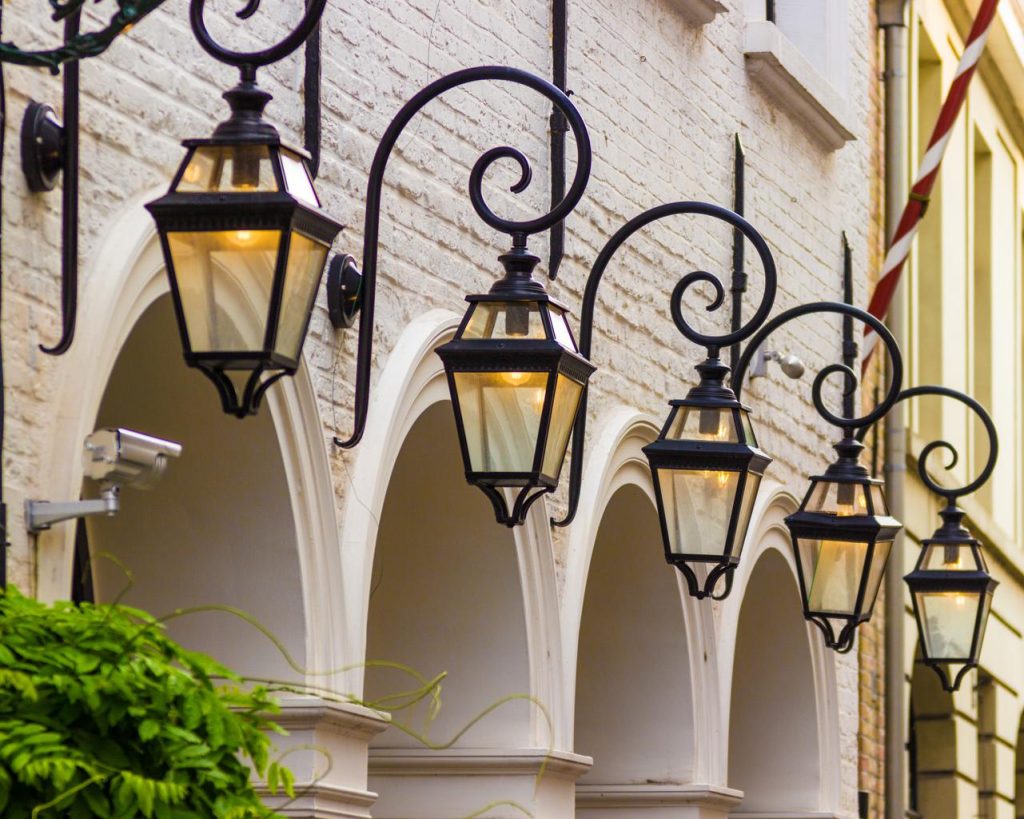
The Importance of Outdoor Landscape Downlighting
Landscape downlighting is a timeless lighting method that can elevate the appearance and functionality of your outdoor spaces. Proper downlighting can create a compelling mood and enhance the overall beauty of your property, whether you have a majestic garden, a cozy patio, or a lovely walkway.
Landscape Downlighting Advantages and Disadvantages
Landscape downlighting is a popular outdoor lighting method known for its capacity to transform outside spaces into lovely twilight havens. This approach highlights significant features and creates a fascinating mood by strategically arranging fixtures above and directing light downward. However, like any lighting approach, outdoor downlighting comes with its set of advantages and disadvantages. In this post, we will examine the benefits and drawbacks of landscape moonlighting so that you may make an informed decision when lighting your outdoor oasis.
Landscape Downlighting Advantages
Aesthetics and Ambiance: One of the most significant benefits of landscape downlighting is its unrivaled ability to improve the aesthetics of outdoor environments. Landscape moonlighting generates a dramatic interplay of shadows and highlights by gently illuminating trees, plants, and building components from above, adding depth and texture to the scenery. The resulting ambiance is warm and inviting, ideal for entertaining company or spending calm evenings outside.
Highlighting Focal Points: Homeowners can use landscape downlighting to highlight specific focal points in their landscape design. Directing light from above adds attention to these aspects, making them stand out significantly throughout the night, whether it’s an outstanding tree, a lovely water feature, or a wonderfully created sculpture. This highlighting effect can improve the overall visual attractiveness of the outdoor space and provide guests with a memorable experience.
Versatility and Flexibility: Landscape downlighting is adaptable and can be used in a variety of outdoor environments. Outdoor down lighting may be tailored to your unique needs, whether you have a big garden, a modest patio, or a modern courtyard. You can easily modify the lighting to complement different landscape components, creating a personalized and appealing outdoor setting, with many fittings and mounting choices available.
Energy Efficiency: Using energy-efficient LED bulbs in landscape downlighting cuts energy usage and operational expenses. LED lights use less electricity while generating bright, focused illumination, making them an environmentally friendly and cost-effective option for outdoor lighting projects.
Safety and Security: Besides its aesthetic charm, landscape downlighting contributes to the safety and security of the property. Illuminating pathways, steps, and walkways, ensures safe navigation during dark hours, preventing potential accidents. Additionally, a well-lit exterior is a deterrent to intruders, enhancing the security of your home and providing peace of mind.
Landscape Downlighting Disadvantages
Light Pollution: One of the primary concerns with landscape downlighting is the potential for light pollution. Misdirected or overly bright fixtures can spill light beyond the intended areas, leading to unwanted glare and excessive illumination in neighboring properties. To mitigate this issue, it is essential to carefully plan the placement of fixtures and use shields or baffles to control light spillage.
Invasive Wildlife: While landscape downlighting adds charm to outdoor spaces, it has the potential to disturb nocturnal wildlife. Bright lights may disrupt the natural behaviors of animals and birds, affecting their sleep patterns, migration routes, and foraging habits. To minimize the impact on wildlife, consider using motion sensors or timers to activate the lights only when necessary.
Maintenance and Costs: Landscape downlighting systems require regular maintenance to ensure optimal performance and longevity. Dust, debris, and weather conditions can affect the fixtures, necessitating periodic cleaning and inspections. Additionally, while LED bulbs are energy-efficient, the initial cost of installing high-quality fixtures and bulbs may be higher than traditional lighting options.
Uniform Illumination Challenges: Achieving uniform lighting throughout the landscape can be a challenge with downlighting. Some areas may receive intense light, while others might remain relatively darker, resulting in an uneven lighting distribution. Proper planning and strategic placement of fixtures are vital to overcome this drawback and achieve balanced illumination.
Types of Landscape Downlighting
Landscape downlighting involves strategically positioning fixtures to direct light downward, accentuating specific elements within the scenery. In this guide we will delve into landscape downlighting, exploring its various types, including Landscape Ambient Downlighting, Landscape Task Downlighting, Landscape Accent Downlighting, and Landscape Decorative Downlighting. Each type brings its unique charm and purpose, offering different possibilities to create enchanting exterior environments.
Landscape Ambient or General Downlighting
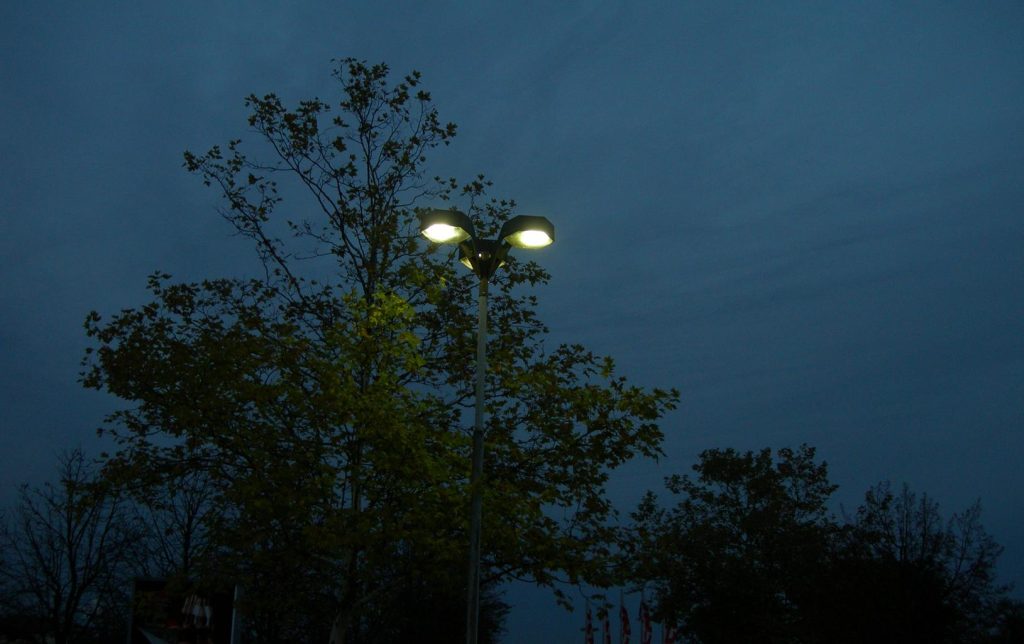
Landscape ambient downlighting, or landscape general downlighting, is the foundation of any outdoor lighting design, providing overall illumination to the entire landscape. High above the ground, these fixtures cast a soft and gentle glow that spreads across the outside space, creating a warm and inviting ambiance. Commonly mounted on trees, eaves, or pergolas, outdoor ambient downlights often have dimmable LED bulbs to adjust the light intensity as desired. Outdoor ambient downlighting is perfect for hosting gatherings, providing sufficient lighting for general activities, and ensuring safe movement across the landscape at night.
Landscape Task Downlighting
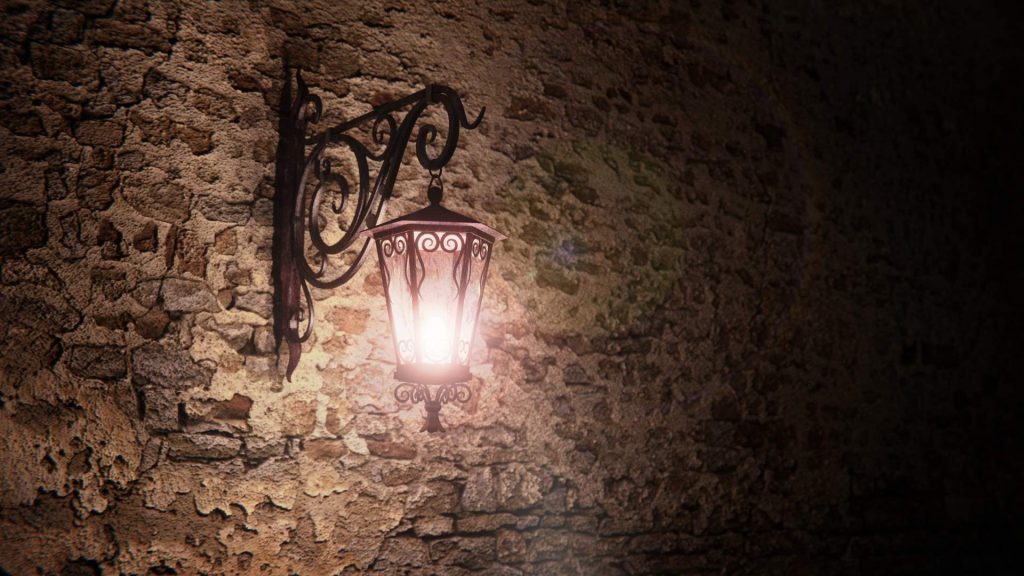
Landscape task downlighting highlights specific functional areas within the outdoor space, providing focused lighting where it is needed the most. Outdoor task downlighting is ideal for activities that require precise lighting, such as cooking, reading, or working on a patio or outdoor kitchen. Outside task downlights are strategically installed above workspaces, countertops, or seating areas to ensure ample task light while maintaining a cozy and inviting atmosphere. Combining functionality with aesthetics, landscape task downlighting adds practicality and charm to the outdoor working experience.
Landscape Accent Downlighting
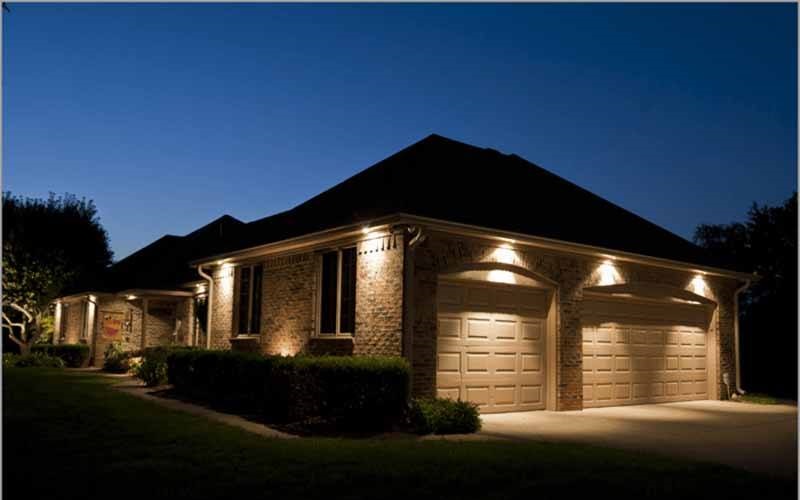
Landscape accent downlighting draws attention to specific focal points or architectural features in the scenery. By placing fixtures at elevated positions, such as on trees or posts, outdoor accent downlights cast a downward beam of light that highlights and enhances the visual appeal of elements like sculptures, water features, or unique plantings. The interplay of light and shadow adds depth and dimension, showcasing these elements during nighttime. Landscape accent downlighting is a powerful tool for creating a stunning and memorable outdoor environment that leaves a lasting impression on guests.
Landscape Decorative Downlighting
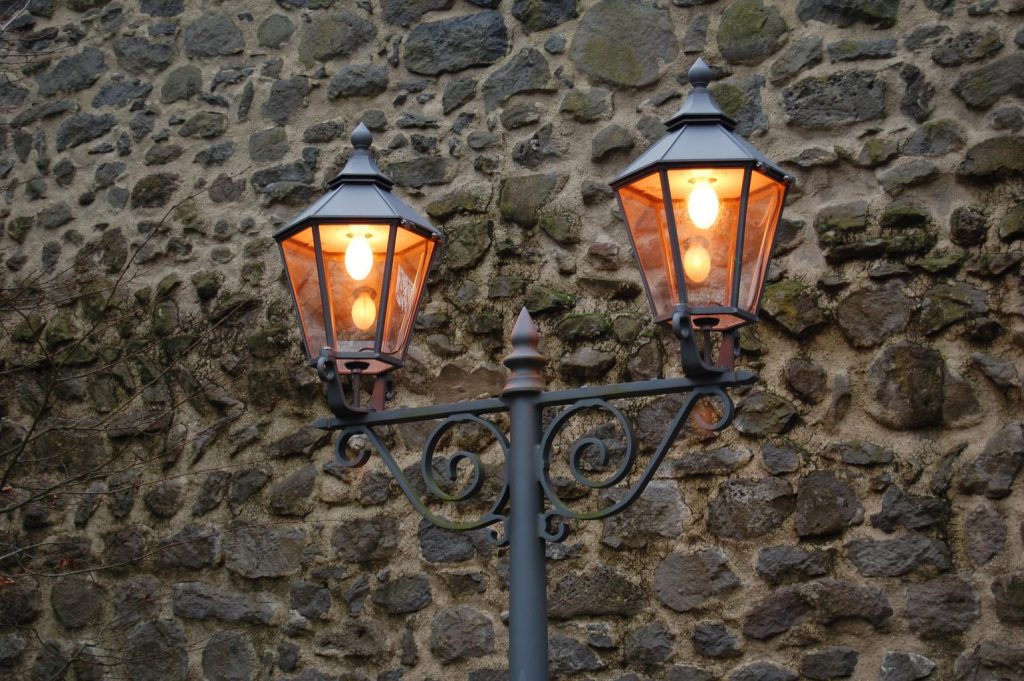
Landscape decorative downlighting adds a touch of elegance and charm to the outdoor setting. Outdoor decorative downlighting not only serves as a functional light source but also doubles as a decor element in itself. Outside decorative downlights are available in various shapes, designs, and finishes to complement the overall aesthetics of the landscape. They are commonly used to illuminate pathways, gardens, or seating areas, adding a magical and whimsical ambiance to the outdoor space. Landscape decorative downlighting is perfect for creating a romantic atmosphere during special occasions or adding a sense of enchantment to your everyday outdoor experience.
Types of Outdoor Down-Lighting Fixtures
Outdoor down-lighting fixtures play an important role in transforming our homes’ exteriors into pleasant and fascinating settings. With multiple alternatives available, each catering to certain lighting requirements, selecting the proper fixtures is critical to creating the ideal outdoor environment. We will look at the various types of outdoor down lighting fixtures, such as Spotlights, Floodlights, Pathway Lights, Hardscape Lights, Hanging Lights, LED Soffit Lighting, and Under Eaves Outdoor Lighting, in this guide. Understanding the characteristics and applications of each type will allow homeowners to make informed decisions and bring their outdoor spaces to life after dark.
Spotlights

Spotlights are versatile outdoor down lighting fixtures designed to cast a concentrated beam of light on specific focal points, such as architectural features, sculptures, or landscape elements. These adjustable fixtures allow homeowners to direct the light precisely where they desire. Spotlights are excellent for creating dramatic effects, accentuating unique details, and adding depth and dimension to the outdoor landscape. With their focused illumination, spotlights are ideal for highlighting intricate designs and captivating features, making them a favorite among landscape designers and homeowners alike.
Floodlights
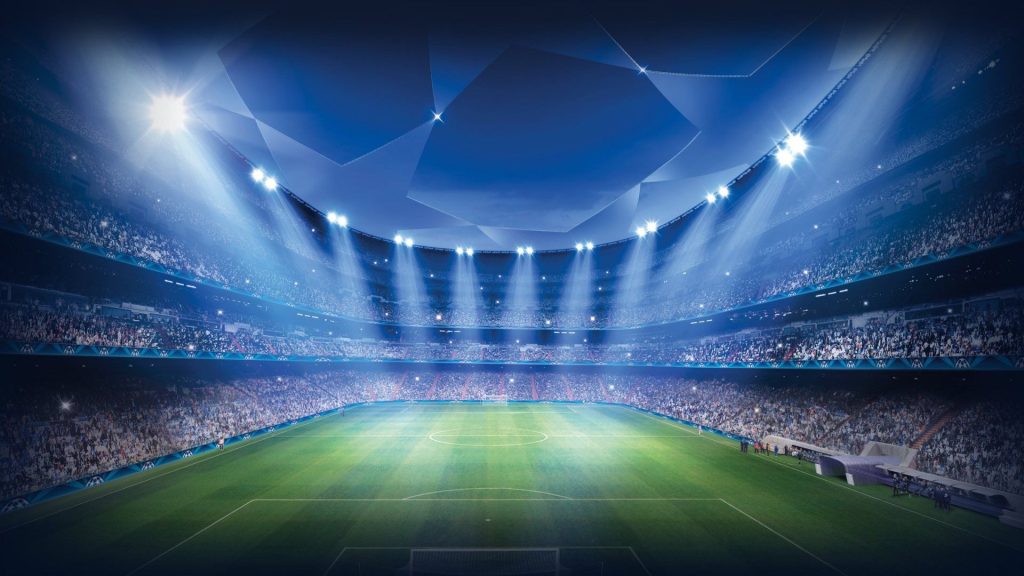
Floodlights are powerful outdoor down-lighting fixtures that give broad, homogeneous illumination across vast areas. These fixtures emit a wide beam of light, making them ideal for lighting expansive spaces such as driveways, patios, or large garden areas. Floodlights are an excellent choice for enhancing safety and security outdoors, as their bright and wide illumination leaves no dark corners. They can also work with motion sensors for added comfort and energy savings.
Pathway Downlights
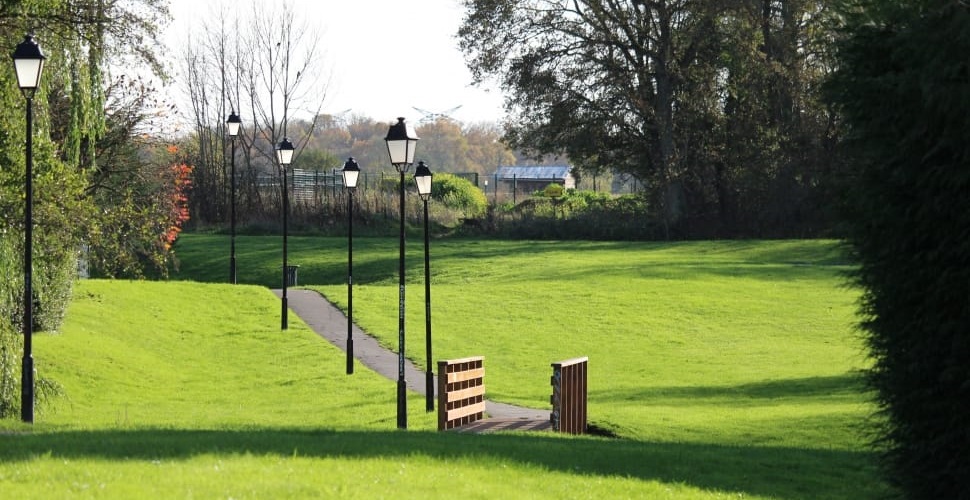
Pathway downlights are outdoor down-lighting devices that are both functional and aesthetically pleasing. These fixtures line up with sidewalks and garden paths, providing sufficient lighting to safely guide pedestrians. Pathway lights come in different styles, ranging from low-profile stake lights to lantern-style fixtures, giving homeowners plenty of options for complementing their outdoor decor. Pathway downlights offer a touch of refinement and beauty to any outdoor environment with their soft and inviting glow.
Hardscape Downlights
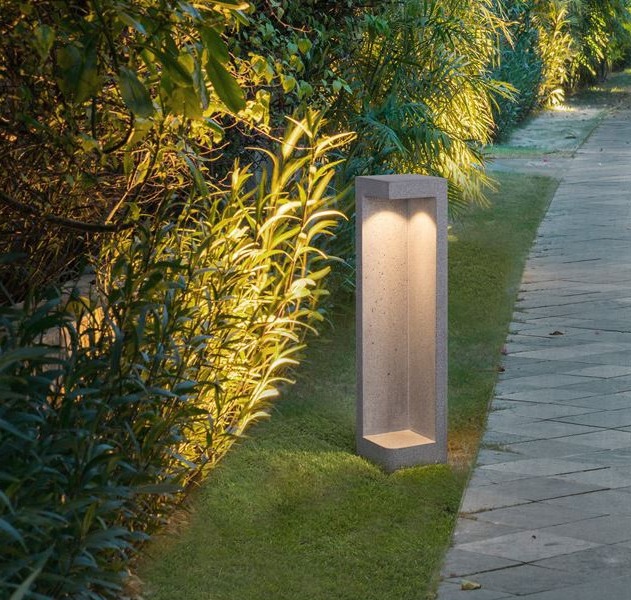
Hardscape downlights are distinct outdoor downlighting fixtures that integrate seamlessly with hardscape elements such as retaining walls, steps, or decks. These fixtures are typically low-profile and discreet, serving as functional lighting and decorative accents. Hardscape lights create a visually appealing effect by casting light downwards along the surfaces, enhancing the architectural beauty of the setting. They are ideal for transforming ordinary hardscape features into stunning focal points, infusing the outdoor space with sophistication and allure.
Hanging Lights
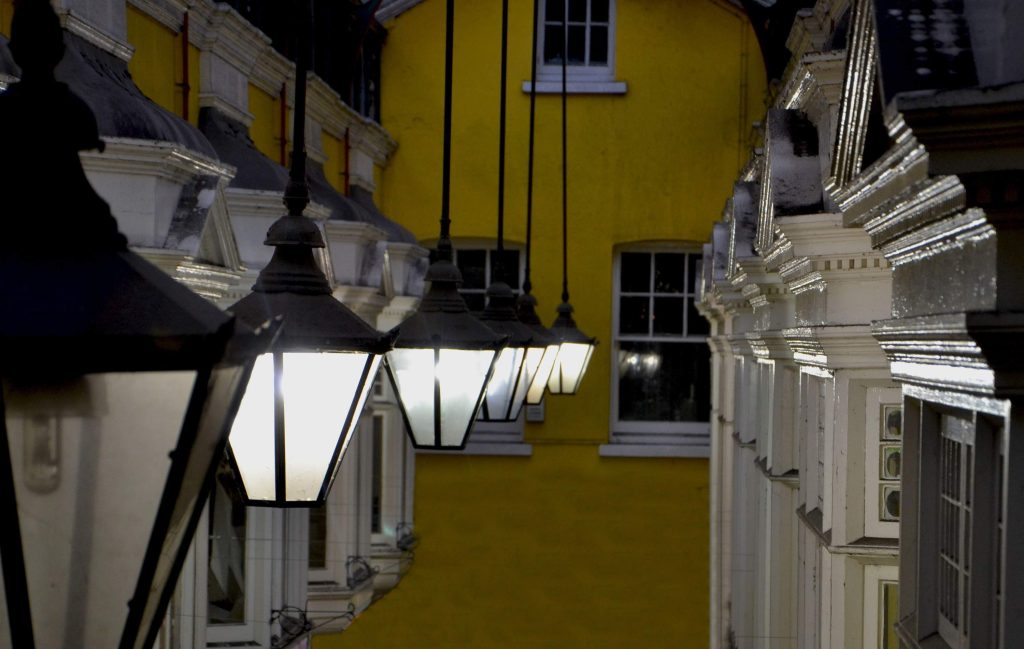
Hanging lights are charming outdoor down-lighting fixtures that add a touch of elegance and warmth to your outdoor spaces. These fixtures are suspended from overhead structures, such as pergolas, trellises, or trees, creating a magical and intimate setting. They cast a soft and inviting glow that fosters a sense of intimacy, making them ideal for hosting memorable gatherings or romantic evenings outdoors. Hanging lights also bring a festive atmosphere to special occasions and celebrations, infusing your outdoor space with a cheerful and welcoming ambiance.
LED Soffit Lighting
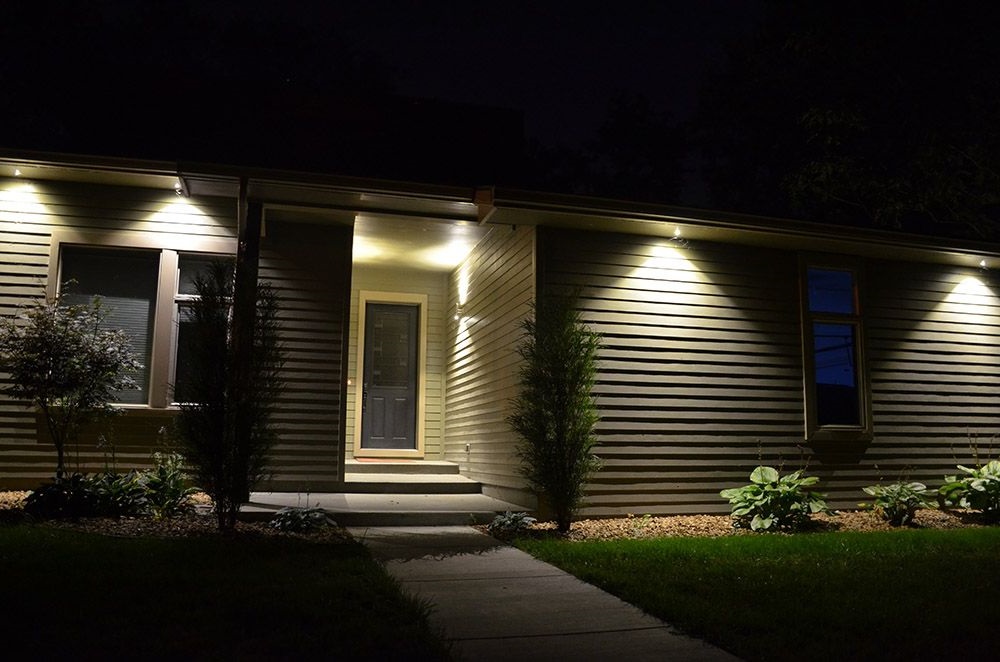
LED soffit lighting is a modern outdoor down lighting fixture installed on the underside of architectural features, such as eaves or overhangs. These fixtures emit a gentle and even downward glow, adding warmth and a welcoming ambiance to the outdoor environment. Outdoor LED soffit lighting is energy-efficient, durable, and requires minimal maintenance, making it an eco-friendly and cost-effective lighting solution for homeowners. It is commonly used to illuminate entryways, outside seating areas, or exterior walls, complementing the overall architectural design.
Under Eaves Outdoor Lighting
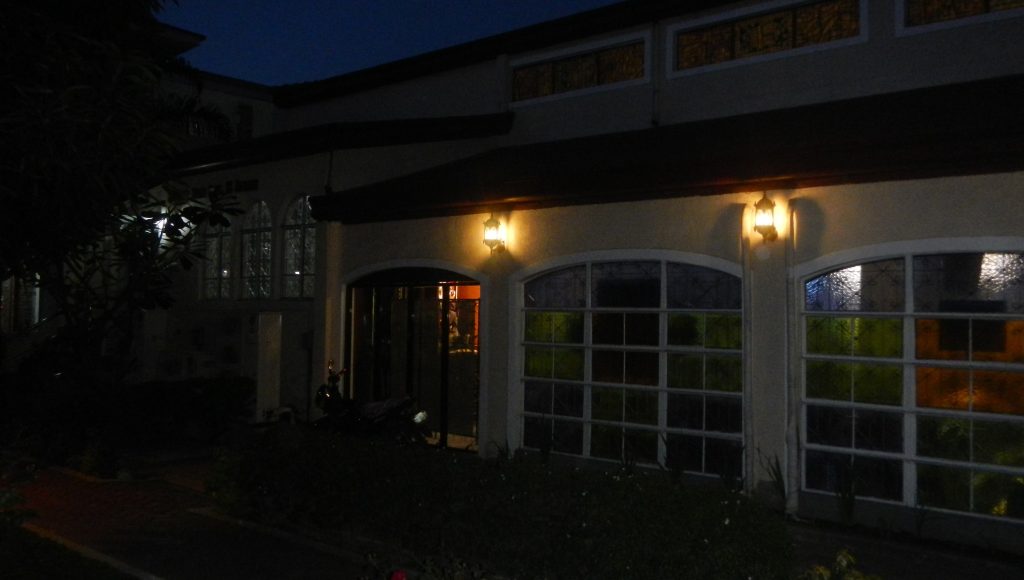
Under eaves outdoor lighting fixtures are mounted beneath the eaves or roof overhangs of the house, providing soft and indirect lighting to the outdoor space below. These fixtures create a subtle and relaxing ambiance, ideal for outdoor lounging or entertaining areas. Under eaves outside lighting fixtures are perfect for illuminating outdoor patios, decks, or poolside areas, allowing homeowners to enjoy the outdoors long after sunset.
Guide to Installing Outdoor Landscape Moonlighting
Proper installation is vital to ensure the effectiveness and longevity of your outdoor landscape moonlighting system. While it’s advisable to hire a professional for more complex setups, here’s a general guide for DIY enthusiasts:
Planning the Layout
Before starting the installation, create a detailed plan of your outdoor space. Identify the areas you wish to light and the type of fixtures required for each location. Planning the layout will help you determine the number of downlights needed and their optimal positions.
Gathering Materials
Ensure you have all the required tools and materials, including downlights, wiring, connectors, a transformer, a shovel, and a voltage tester.
Installing Fixtures
Mount the downlights in their designated spots according to your plan. Follow the manufacturer’s instructions for each fixture to ensure a secure installation.
Connect Wiring and Transformer
Lay out the wiring path and dig trenches where necessary to bury the cables securely. Connect the wiring to the downlights and run them back to the transformer. Secure the connections with weatherproof connectors and seal them to prevent water infiltration.
Test the System
Once all connections are complete, turn on the power and test the downlights to ensure they work properly.
Fine-Tuning
Walk around your property during the evening to assess the lighting effect. Make any necessary adjustments to the angle or brightness of the downlights to achieve the desired outcome.
Landscape Downlighting Outdoor Best Practices
Landscape downlighting is an enchanting outdoor lighting method that brings a touch of magic to your outside spaces. By strategically placing fixtures to cast a gentle glow, landscape downlighting enhances the beauty of your surroundings, creating a fascinating ambiance that lasts well into the night.
Adapting Designs to Suit Various Landscapes
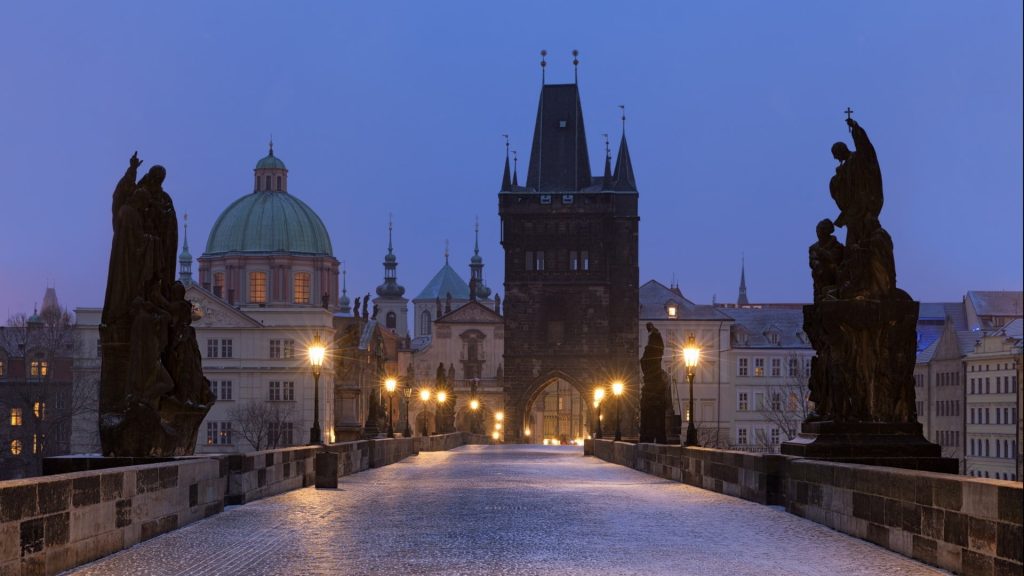
For large open spaces, focus on grand downlighting arrangements that highlight the vastness of the area. Choose mild downlighting for tiny gardens that accents individual elements without overwhelming the space. For tropical landscapes, consider downlights that mimic moonlight to complement the lush greenery.
Design Ideas for Landscape Downlighting
Drawing inspiration from outstanding landscape downlighting ideas will assist you in envisioning the possibilities for your outdoor setting. Here are some inspiring ideas to spark your creativity:
Grazing Effect
Position downlights close to textured surfaces, such as stone walls or brick facades, to accentuate the surface texture and add visual interest.
Architectural Silhouettes
Place downlights behind architectural features like columns or arches to create dramatic silhouettes against walls.
Magical Fairy Lights
Magical fairy lights are a delightful addition to any landscape downlighting design, infusing outdoor space with a whimsical and dreamy atmosphere. These delicate string lights, often adorned with tiny twinkling bulbs, can be draped along fences, arbors, or tree branches to create a magical canopy of light.
Statement Plant Lighting
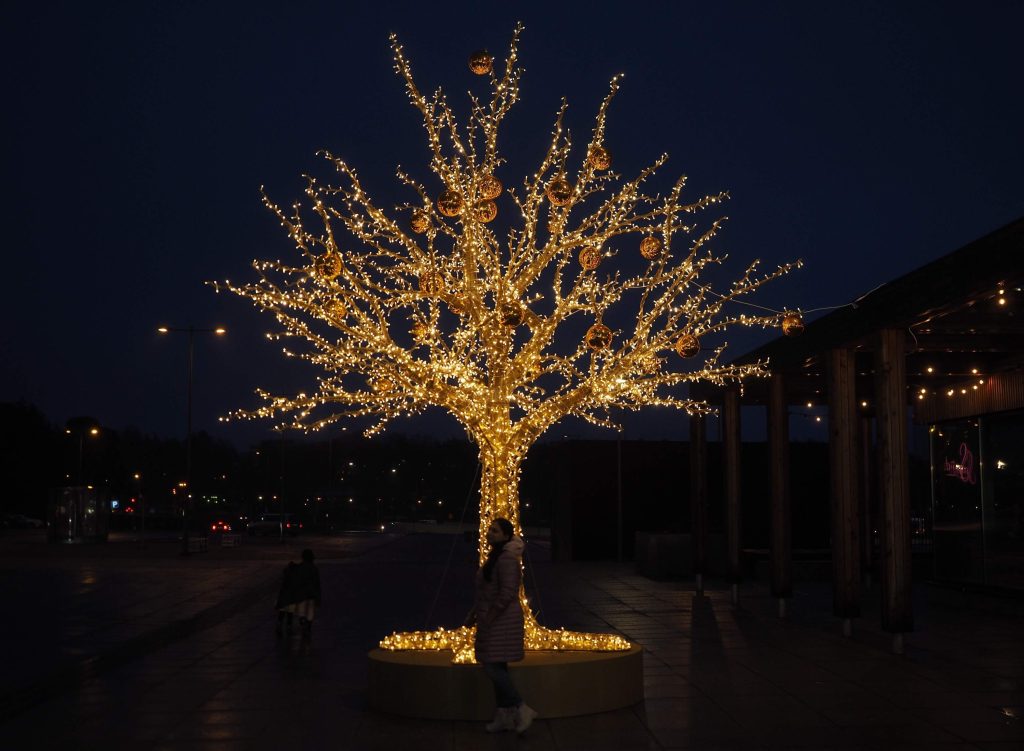
Statement plant lighting is a design idea that celebrates the beauty of your landscape’s greenery and transforms it into focal points of artistic illumination. You may create interesting silhouettes and highlight the distinct textures of your favorite plants and trees by strategically putting downlights around them.
Avoiding Common Mistakes in Landscape Downlighting
While landscape downlighting offers numerous benefits, it’s essential to address potential concerns to ensure the best possible results:
To minimize light pollution and its impact on neighboring properties and wildlife, use downlights with proper shielding, direct light only where needed, and avoid overly bright fixtures that may disturb the night sky.
Strive for a balance between functional lighting and artistic illumination to create an appealing landscape. Avoid overlighting areas, as excessive brightness can diminish the beauty of your outdoor spaces.
Choose downlights specifically designed to withstand outdoor conditions, including rain, wind, and temperature fluctuations. Regularly inspect and clean the fixtures to ensure they remain in good working condition.
Maintenance and Troubleshooting Tips
To keep your landscape downlighting system in top condition and troubleshoot any issues, follow these guidelines:
Clean the fixtures regularly to remove dirt, dust, and debris that may affect their performance. Check for loose connections and secure them if necessary.
Dim or Flickering Lights: This could be due to loose connections or faulty bulbs. Check the wiring and replace any malfunctioning bulbs.
Water Damage: If water enters the lighting fixtures it causes electrical problems. Ensure all fixtures are properly sealed to prevent water ingress.
Inconsistent Lighting: Adjust the angle and position of the fixtures to achieve a uniform and balanced lighting effect.
Trim nearby vegetation to prevent it from obstructing the light distribution.
Trends and Innovations in Landscape Downlighting
The landscape lighting industry is changing, with new technology and trends influencing how we light our outside environments. Here are some emerging trends in landscape downlighting:
LED Downlighting
As mentioned before, LED bulbs are the go-to choice for energy-efficient landscape downlighting. They have a longer lifespan and use less energy, making them a sustainable lighting option.
Solar-Powered Downlighting
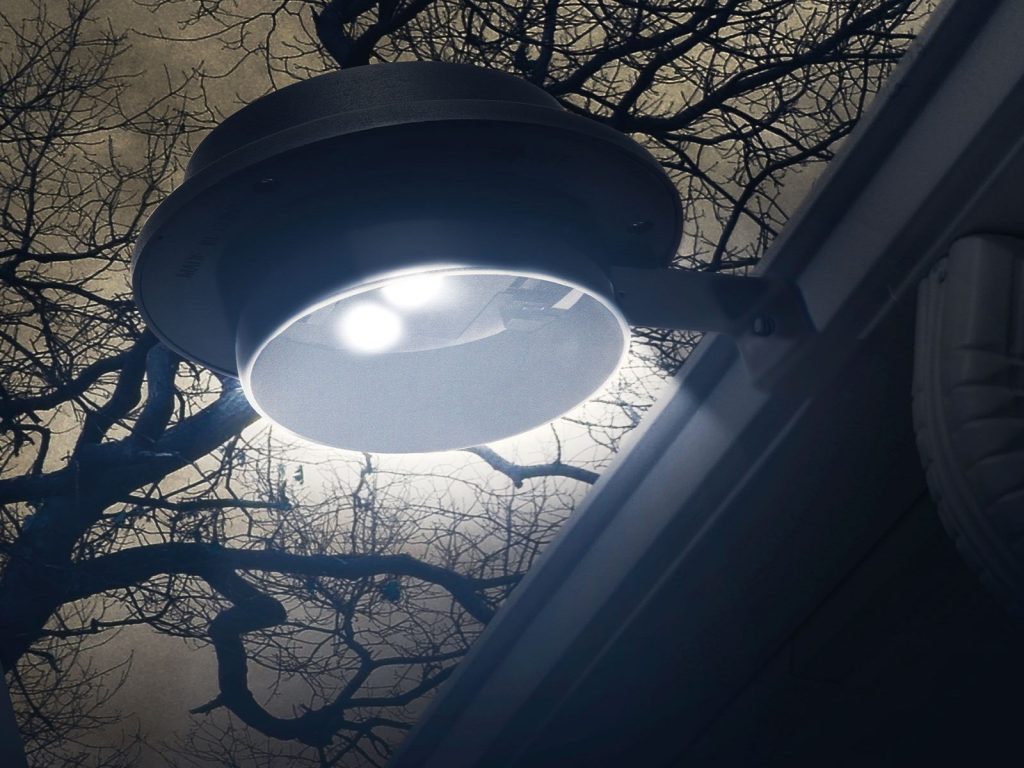
Consider solar-powered downlights for areas with ample sunlight exposure during the day. These fixtures absorb solar energy and use it to power the lights at night, eliminating the need for an electrical connection.
Color-Changing Downlighting
LED fixtures offer a wide range of colors and color-changing options, allowing you to customize the ambiance according to your mood or occasion.
Motion Sensors & Timers
Install motion sensors and timers for areas that don’t require constant illumination, such as pathways or entryways. The lights will activate only when someone approaches, saving energy and increasing security.
Automated Lighting Sequences
Program your downlights to follow specific lighting sequences or schedules, adapting to different times of the day or events.
Voice and Smart Controls
Utilize voice-activated assistants and smart devices to control your landscape downlighting with simple commands.
Real-Life Outdoor Landscape Downlighting Designs
In the realm of outdoor living, landscape downlighting designs have the power to transform ordinary spaces into enchanting nocturnal wonderlands. From lighting patios and decks to highlighting the exterior of your house and beautifying your landscape yard, outdoor downlighting can create a captivating ambiance that invites you to linger outside long after sunset.
Downlighting Statues
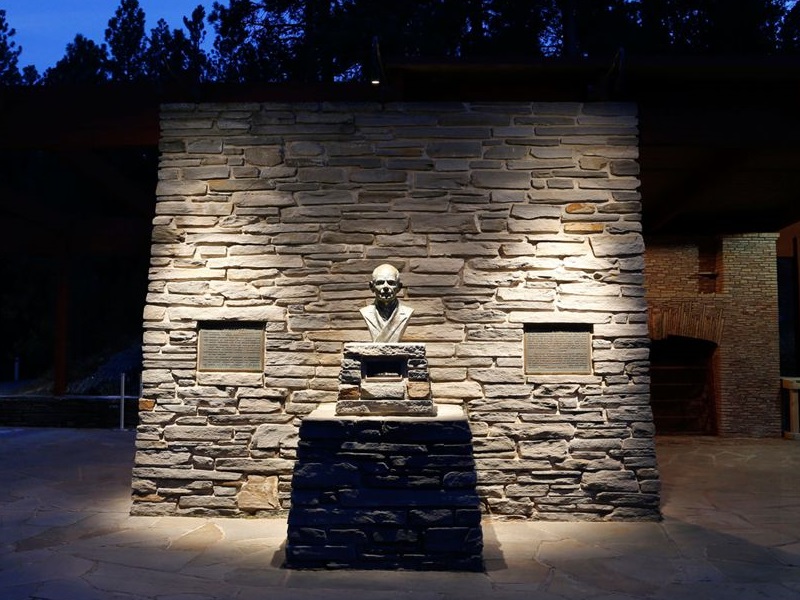
Showcase sculptures or statues with strategically placed downlights to draw attention to their intricate details.
Patio or Deck Downlighting
Patio or deck downlighting designs can turn your outdoor seating areas into cozy retreats where you can unwind under the stars. Strategically placed downlights can add an inviting glow to your patio, creating a warm and intimate ambiance for gatherings with family and friends. Recessed downlights along the edges of your deck can cast soft illumination on the floor, defining the boundaries of your outdoor living space and preventing accidents during the evening hours.
Exterior House Down Lighting
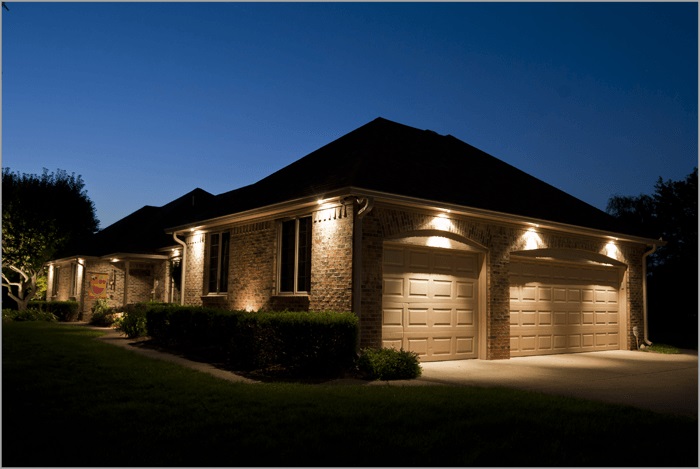
Exterior house downlighting designs can enhance the architectural beauty of your home while ensuring safety and security around your property. Under eaves outdoor lighting fixtures can create a soft and indirect glow, enhancing the charm of your house’s exterior while providing essential illumination around entrances and walkways. Motion-sensor floodlights can be integrated into the design, offering an added layer of security that deters intruders while maintaining an aesthetically pleasing outside lighting scheme.
Landscape Tree Lighting. Downlighting Trees
Install downlights high in trees to create a soft, moonlight-like glow that filters through the leaves and branches.
Water Feature Downlighting
Use aerial and submersible downlights to illuminate ponds or water features, creating a magical underwater effect that brings your aquatic elements to life.
Landscape Downlighting Yard
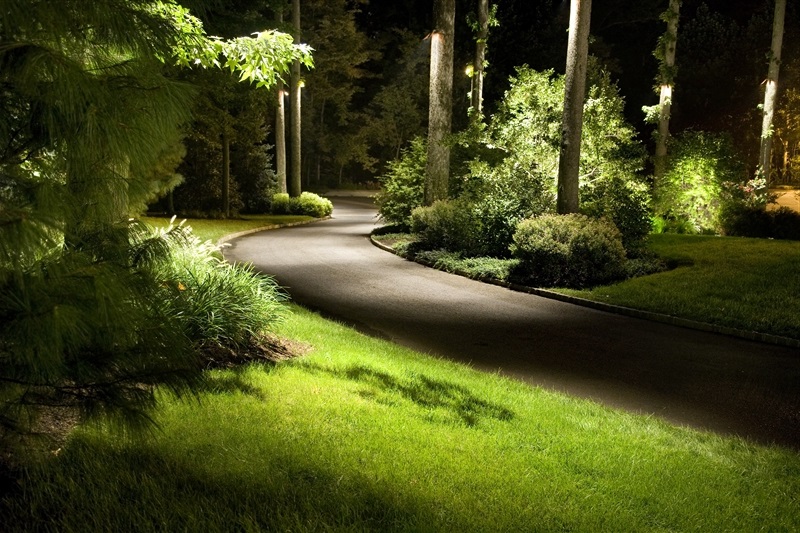
Landscape downlighting designs can make wonders in transforming your yard into an enchanting heaven. Statement plant lighting can be employed to highlight your prized plants and trees, casting magical shadows that celebrate nature’s beauty.
Conclusions
Landscape downlighting emerges as a captivating and versatile outdoor lighting method that holds the key to unlocking the magic of our outdoor spaces. Throughout this guide, we have explored the various facets of outdoor downlighting, from its fundamental definition to the different types of fixtures and design ideas that elevate our outside living experience. As we take a final glimpse into the world of landscape downlighting, it becomes evident that this artful illumination not only enhances the beauty of our landscapes but also adds functionality and safety to our outdoor environments.
One of the key benefits of landscape moonlighting is its capacity to create an alluring mood that entices us to spend time outside even after dusk has gone. By strategically positioning fixtures above and directing light downward, landscape downlighting casts a soft and inviting glow that transforms our gardens, patios, and pathways into mesmerizing nocturnal wonderlands. The interplay of light and shadow accentuates the natural beauty of our surroundings, highlighting architectural features, sculptures, and lush foliage with artful precision.
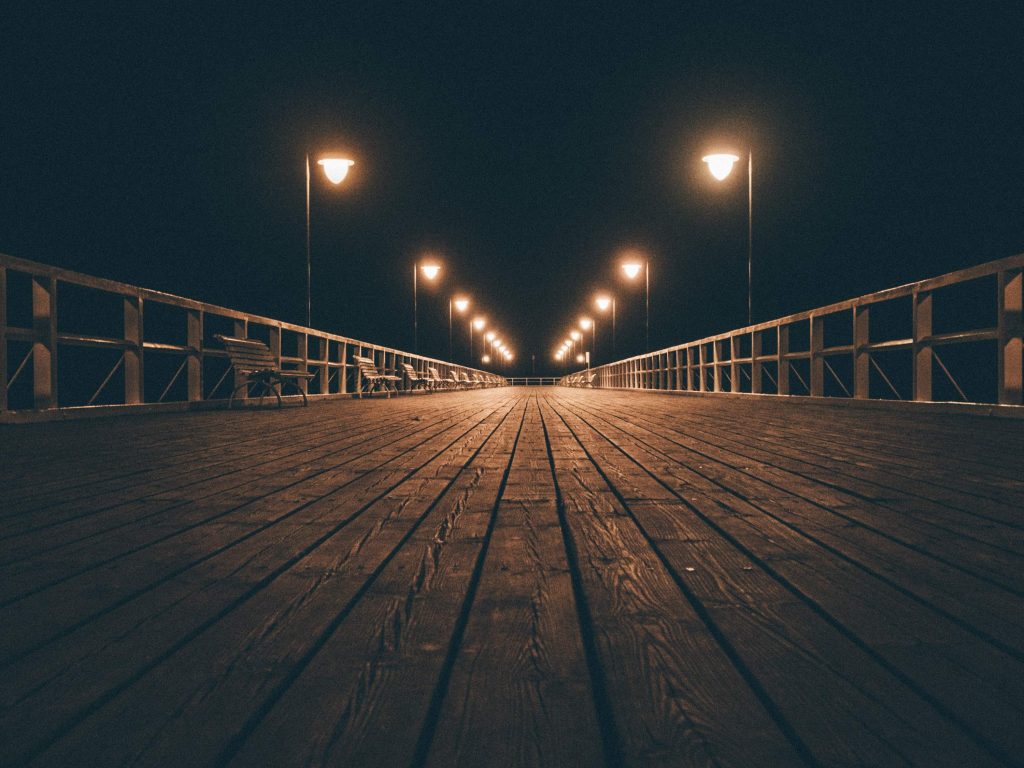
Furthermore, landscape downlighting is versatile in its uses, responding to a wide range of outdoor lighting requirements. Spotlights take center stage by highlighting selected focal areas in the landscape, bringing drama and emphasis to crucial components. Floodlights offer broad and uniform illumination, improving safety and security in large outdoor spaces. The gentle glow of pathway lights guides our movements, ensuring safe travel through our outside areas. Hardscape lighting blends seamlessly with architectural components to create a stylish and seamless outdoor atmosphere. LED soffit lighting and under-eaves outdoor lighting enhance the exteriors of our homes, setting the stage for spectacular outdoor living.
In conclusion, landscape downlighting emerges as a symphony of artful lighting that weaves enchantment into our outdoor landscapes. Whether it’s accentuating focal points, creating a warm and inviting ambiance, enhancing architectural beauty, or promoting safety and security, landscape downlighting can transform outdoor spaces into magical realms that captivate senses and leave a lasting impression on all who experience its charm.
FAQs (Frequently Asked Questions) about Landscape Downlighting
Q1.Can I install landscape downlighting myself?
Homeowners with minimal electrical understanding can tackle simple DIY landscape downlighting projects. If you are unfamiliar with electrical work or the project requires intricate installations, it is preferable to employ a professional to ensure safety and proper operation.
Q2.Can landscape downlighting improve home security?
Landscape downlighting plays a crucial role in improving home security. By providing sufficient illumination, acting as a deterrent, integrating motion sensors, and enhancing surveillance capabilities, landscape downlighting helps create a safer and more secure living environment.
Q3.Can landscape downlighting increase the value of my property?
Landscape downlighting can significantly increase the value of your property by enhancing its visual appeal, expanding usable living space, improving security, promoting energy efficiency, and offering low-maintenance solutions.
Q4.How do I maintain my landscape downlighting system?
Regular maintenance is crucial to keep your landscape downlighting system in top condition. Clean the fixtures regularly, check for loose connections, and trim nearby vegetation that could obstruct the light distribution. Additionally, consider a professional inspection at least once a year.
Q5.What color of light is best for landscape downlighting?
For highlighting natural elements such as trees, plants, and architectural features, a warm white light with a color temperature ranging from 2700K to 3000K is often preferred. Warm white light complements the natural tones of the landscape, making it an excellent choice for creating a balanced and natural-looking illumination.
For pathways, steps, and other areas where visibility and safety are essential, a cooler white light with a color temperature of 4000K to 5000K is recommended. Cool white light offers better color rendering and higher brightness, ensuring clear visibility and safe movement during nighttime.
Q6.What is the most natural method of artificial lighting used in landscaping?
Downlighting is the most natural method of artificial lighting used in landscaping. Moonlighting is a lighting method in which fixtures are placed high up in trees or on elevated structures to replicate the soft and diffused moonlight glow. This method produces soft, organic lighting similar to how the moon’s light filters through tree canopies and branches.
Q7.Are landscape downlights suitable for all weather conditions?
Most landscape downlights are designed to survive harsh weather conditions, especially those constructed of durable materials like stainless steel or aluminum.
Q8.How can I ensure my landscape downlighting is energy-efficient?
By implementing the following strategies, you can optimize your outdoor downlighting design and minimize energy consumption without compromising on the beauty and functionality of your landscape: LED lighting, low-wattage bulbs, motion sensors, timer controls, zoning and dimming, solar-powered lighting, proper fixture placement, and regular maintenance.
Q9.Should landscape downlights be taken down in winter?
The decision to take down landscape downlights in winter depends on the type of fixtures used and the prevailing weather conditions. While certain fixtures in regions prone to heavy snowfall or extreme temperatures may benefit from temporary removal, many high-quality and weather-resistant downlights can safely remain in place. Regular maintenance and adherence to manufacturer recommendations are vital in ensuring the longevity and optimal performance of lights, regardless of the season.
